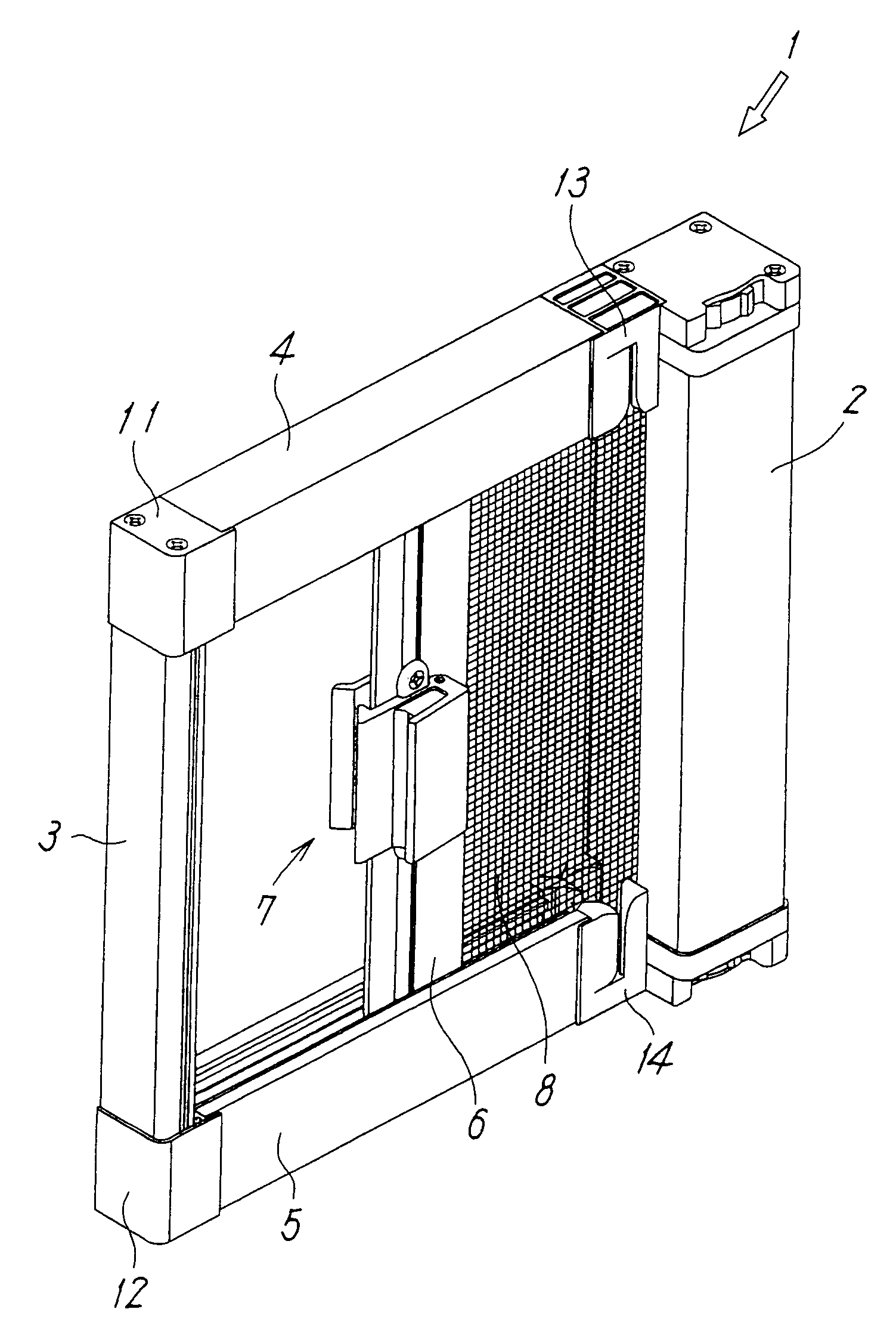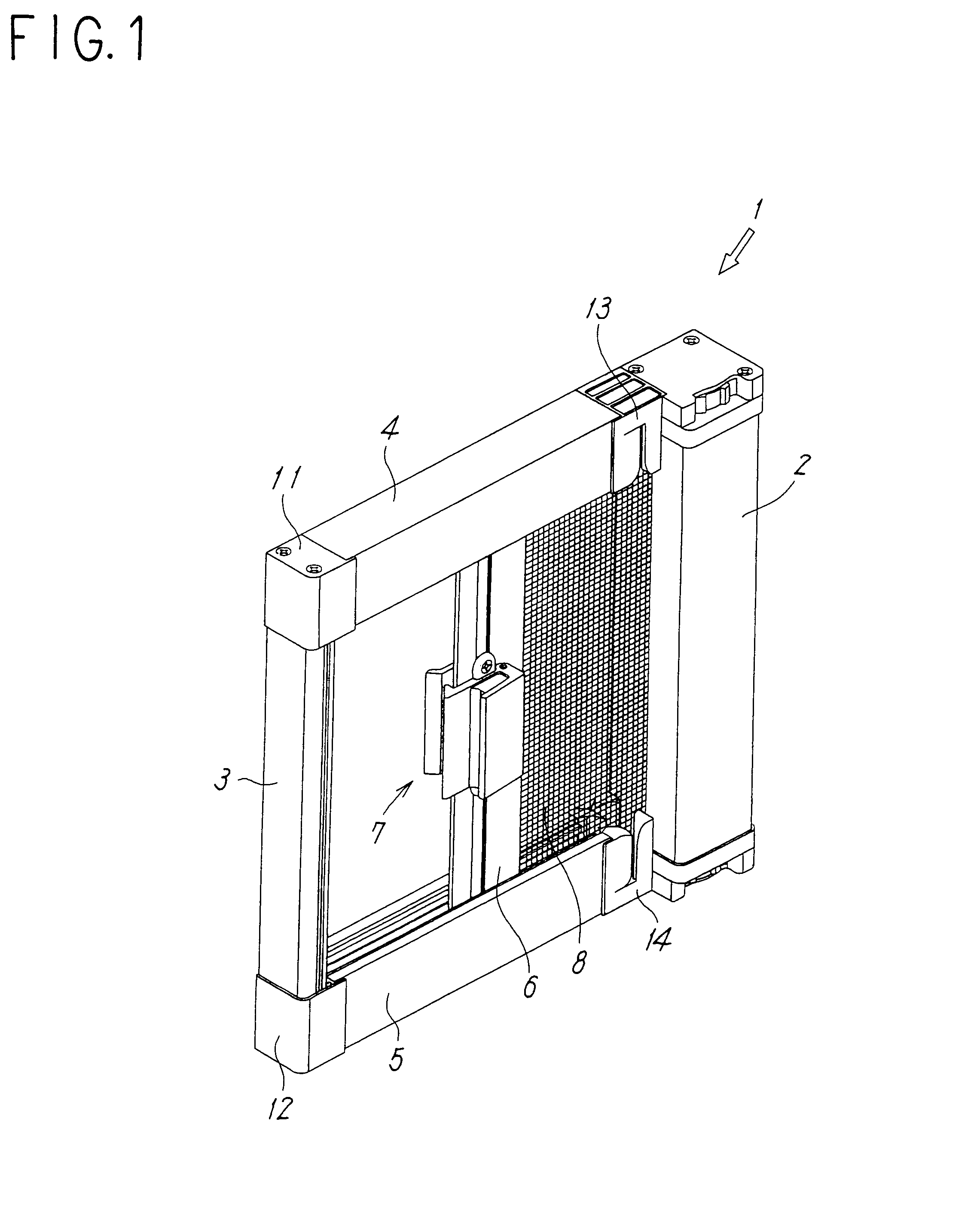Take up-type screen device whose lock is releasable from either inside or outside
a screen device and lock technology, applied in the direction of door/window protective devices, shutters/movable grilles, insect protection, etc., can solve the problems of difficult positional adjustment of the locking mechanism along the structure of the window screen device is extremely simple, and the lock mechanism of the movable frame member engaged with the locking frame member cannot be unlocked. , to achieve the effect of simple structure, easy repositioning, and high locking function
- Summary
- Abstract
- Description
- Claims
- Application Information
AI Technical Summary
Benefits of technology
Problems solved by technology
Method used
Image
Examples
first embodiment
[0035]Embodiments of the present invention will now be described with reference to the drawings. FIGS. 1 to 5 illustrate a first embodiment in which a windable screen device according to the present invention is applied to a side-sliding fly-screen door.
[0036]Referring to FIGS. 1 and 2, a fly-screen door 1 includes a winding box 2 fixed to one of side-frames (not shown in the drawings) disposed along one side of an opening of a building; a stationary locking-frame member 3 fixed to the other side-frame (not shown in the drawings) disposed along the other side of the opening of the building; upper and lower guide rails 4 and 5 respectively mounted to upper and lower frames disposed along the upper and lower sides of the opening of the building; a screen 8, i.e. a fly-screen, which can be opened and closed by being moved along the upper and lower guide rails 4 and 5; a movable-frame member 6 whose one side is fixed to the screen 8 and which can be operated so as to open or close the s...
second embodiment
[0055]FIGS. 12(A) and 12(B) illustrate a second embodiment in which the locking element 7 is provided in a windable double-sliding-screen device.
[0056]Although the locking-frame member 3 is fixed to an opening of a building in the single-sliding screen device described above, the double-sliding screen device of the second embodiment is provided with a second movable-frame member 60 in place of the stationary locking-frame member 3, such that the movable-frame member 60 functions as a movable locking-frame member. In this case, the hooking component 23 of the movable-frame member 6 is engageable with an engagement portion 61 provided in the second movable-frame member 60.
[0057]Like the movable-frame member 6, the second movable-frame member 60 has a long-plate structure provided with the attachment grooves 36, 43, and 44 which are T-shaped in cross-section. Although the second movable-frame member 60 basically has the same structure as the movable-frame member 6, the second movable-f...
PUM
 Login to View More
Login to View More Abstract
Description
Claims
Application Information
 Login to View More
Login to View More - R&D
- Intellectual Property
- Life Sciences
- Materials
- Tech Scout
- Unparalleled Data Quality
- Higher Quality Content
- 60% Fewer Hallucinations
Browse by: Latest US Patents, China's latest patents, Technical Efficacy Thesaurus, Application Domain, Technology Topic, Popular Technical Reports.
© 2025 PatSnap. All rights reserved.Legal|Privacy policy|Modern Slavery Act Transparency Statement|Sitemap|About US| Contact US: help@patsnap.com



